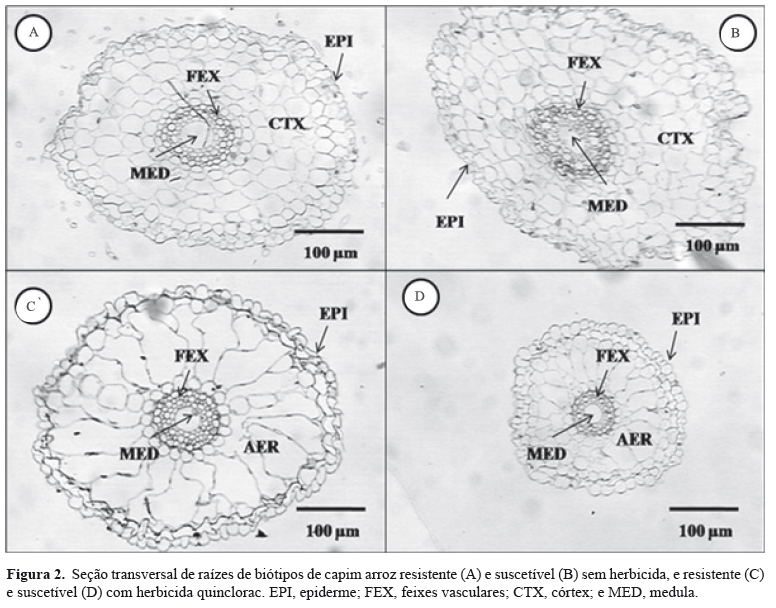The objective of this work was to evaluate the effect of quinclorac on anatomical traits of leaves and roots of barnyardgrass (Echinochloa spp.) biotypes, susceptible and resistant to this herbicide, by micromorphometric assessments. Plants were grown in plastic pots with 250 cm³ capacity. The images of plant sections were obtained with a light microscope equipped with a U‑Photo system, coupled to a digital photo camera connected to a microcomputer. For cross-sections of leaf blades and roots, 10X objectives were used, and 20 sections/fields per plant were evaluated, with ten measurements per section and four replicates per treatment. Differences were observed between resistant and susceptible biotypes, both in the absence and in the presence of quinclorac. The resistant biotype shows leaf blades that are less affected by the herbicide; however, there are changes in root tissue constitution with increased aerenchyma formation. The susceptible biotype also shows formation of aerenchyma when treated with quinclorac, but in lower levels than those observed for the resistant biotype.
Echinochloa; Oryza sativa; micromorphometric analyses




